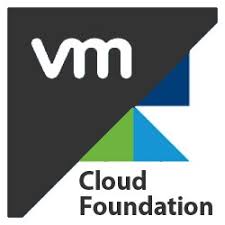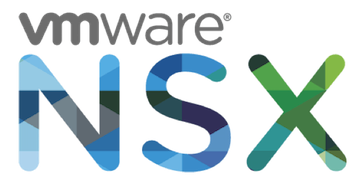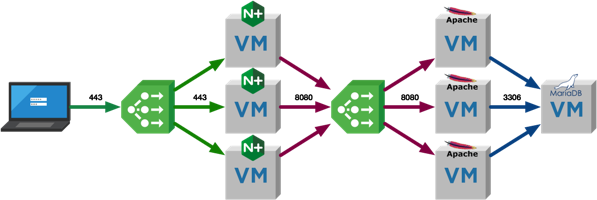Nsx
 Written by Simon Eady
on 29/7/2019
Written by Simon Eady
on 29/7/2019
I have been working with VMware Cloud Foundation recently and while for the most part things went well there were occasions where challenges were encountered which made the delivery to the customer all the more trickier than expected.
This article is a list of observations and things to most definitely check or watch out for when delivering a VCF project.
We were working with VCF version 3.7.2 (yes I am aware 3.8 has arrived but that was too late for the delivery in this project)
 Written by Sam McGeown
on 12/6/2019
Written by Sam McGeown
on 12/6/2019
I’ve done a fair amount of work learning VMware PKS and NSX-T, but I wanted to drop down a level and get more familiar with the inner workings for Kubernetes, as well as explore some of the newer features that are exposed by the NSX Container Plugin that are not yet in the PKS integrations.
The NSX-T docs are…not great, I certainly don’t think you can work out the steps
required from the official
 Written by Sam McGeown
on 23/5/2019
Written by Sam McGeown
on 23/5/2019
I ran into this UI bug the other day when I was trying to enable route redistribution on an Edge in a Secondary site of a cross-vCenter NSX deployment.
The Edge itself was deployed correctly, and configured to peer with a physical northbound router, however when I attempted to configure the route redistribution I was unable to do so.
Fortunately, the solution was simple - use the API.
 Written by Sam McGeown
on 8/2/2019
Written by Sam McGeown
on 8/2/2019This series was originally going to be a more polished endeavour, but unfortunately time got in the way. A prod from James Kilby (@jameskilbynet) has convinced me to publish as is, as a series of lab notes. Maybe one day I’ll loop back and finish them…
Requirements
Routing
Because I’m backing my vCloud Director installation with NSX-T, I will be using my existing Tier-0 router, which interfaces with my physical router via BGP. The Tier-0 router will be connected to the Tier-1 router, the NSX-T logical switches will be connected to the Tier-1, and the IP networks advertised to the Tier-0 (using NSX-T’s internal routing mechanism) and up via eBGP to the physical router.
 Written by Sam McGeown
on 13/7/2018
Written by Sam McGeown
on 13/7/2018This series was originally going to be a more polished endeavour, but unfortunately time got in the way. A prod from James Kilby (@jameskilbynet) has convinced me to publish as is, as a series of lab notes. Maybe one day I’ll loop back and finish them…
RabbitMQ for vCloud Director
RabbitMQ High Availability and Load Balancing
The vCloud Architecture Toolkit states
 Written by Sam McGeown
on 13/7/2018
Written by Sam McGeown
on 13/7/2018This series was originally going to be a more polished endeavour, but unfortunately time got in the way. A prod from James Kilby (@jameskilbynet) has convinced me to publish as is, as a series of lab notes. Maybe one day I’ll loop back and finish them…
Prerequisites
I’ve deployed a CentOS7 VM from my standard template, and configured the prerequisites as per my prerequisites post. Updates, NTP, DNS and SELinux have all been configured. I have added a 200GB disk to the base VM, which has then been partitioned, formatted and mounted to /nfs/data - this will be the share used for vCloud Director.
 Written by Sam McGeown
on 13/7/2018
Written by Sam McGeown
on 13/7/2018This series was originally going to be a more polished endeavour, but unfortunately time got in the way. A prod from James Kilby (@jameskilbynet) has convinced me to publish as is, as a series of lab notes. Maybe one day I’ll loop back and finish them…
Prerequisites
PostgreSQL server deployed and configured
Two vRO 7.4 appliances deployed
Before powering them on, add an additional network card on the vcd-sql network
 Written by Sam McGeown
on 10/7/2018
Written by Sam McGeown
on 10/7/2018This series was originally going to be a more polished endeavour, but unfortunately time got in the way. A prod from James Kilby (@jameskilbynet) has convinced me to publish as is, as a series of lab notes. Maybe one day I’ll loop back and finish them…
Installing PostgreSQL 10 Server
The base OS for the PostgreSQL server is CentOS7, deployed from the same template and with the same preparation as detailed in the prerequisites post.
 Written by Sam McGeown
on 18/4/2018
Written by Sam McGeown
on 18/4/2018
When vRealize Lifecycle Manager 1.2 was released recently, I was keen to get it installed in my lab, since I maintain several vRealize Automation deployments for development and testing, as well as performing upgrades. With vRLCM I can reduce the administrative overhead of managing the environments, as well as easily migrate content between environments (I’ll be blogging on some of these cool new features soon).
However, I hit a snag when I began to import my existing environment - I couldn’t get the vCenter data collection to run.
 Written by Sam McGeown
on 26/3/2018
Written by Sam McGeown
on 26/3/2018
One question I’m asked quite a lot is what I use for a 3-tier application when I’m testing things like NSX micro-segmentation with vRealize Automation. The simple answer is that I used to make something up as I went along, deploying components by hand and generally repeating myself a lot. I had some cut/paste commands in my note application that sped things up a little, but nothing that developed. I’ve been meaning to rectify this for a while, and this is the result!

